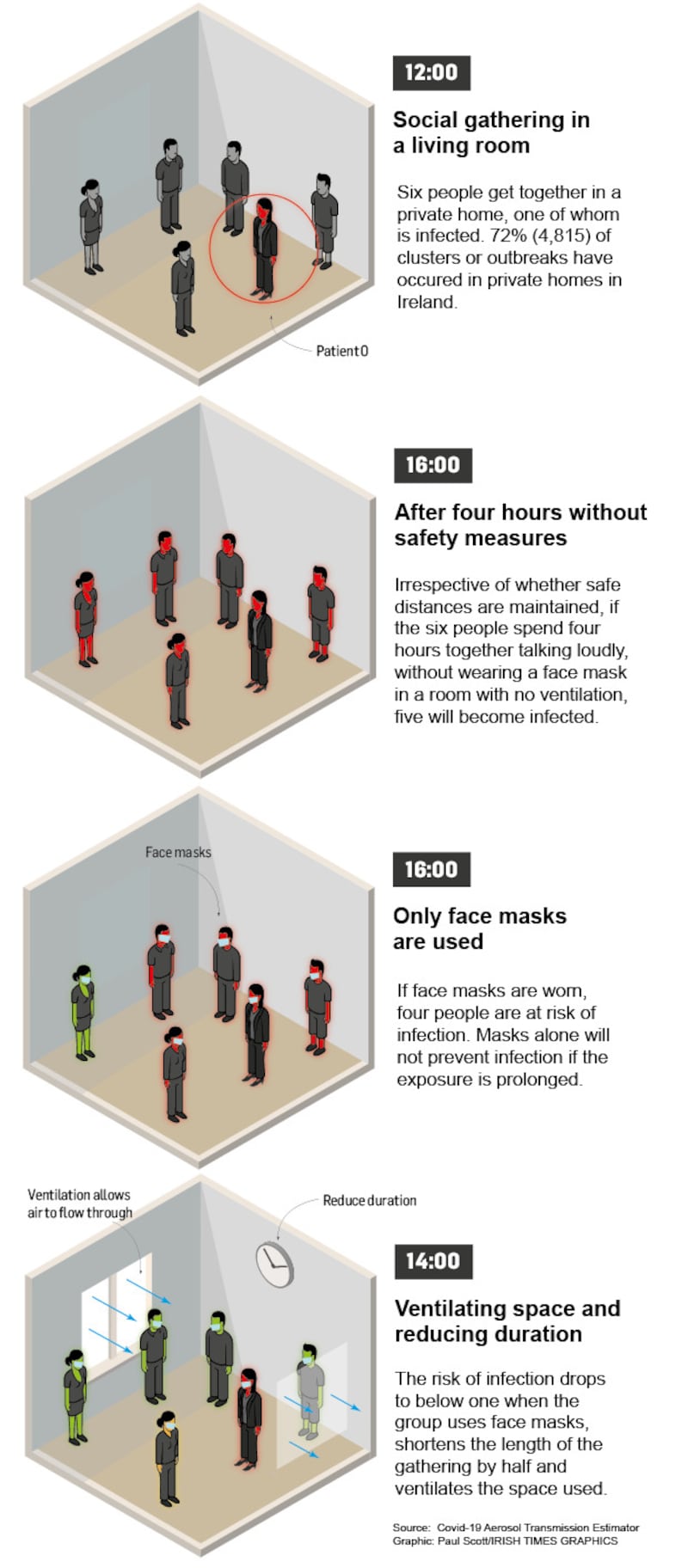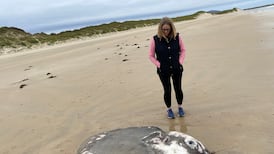A dramatic surge in coronavirus infections is under way in Europe. But compared to the first wave, much more is now known about the virus and how it spreads that can improve efforts to contain it. Here’s how experts from around the world sum up the most important discoveries.
Ventilation
Enclosed spaces where people breathe the same air have been pinpointed as settings for mass spreading of the disease. "It can transmit through the air," said Devi Sridhar, the Chair of Global Public Health at the University of Edinburgh. "And so makes places like bars, pubs, spin classes, discos very high risk."
Ensuring a flow of air by opening windows and doors can make a room safer. Where possible, everyone should avoid gatherings in confined spaces, particularly where talking or singing is taking place as this releases more infectious particles. The European Centre for Disease Prevention and Control (ECDC) recommends three changes of air per hour.
“Avoid these closed, enclosed, crowded spaces, close-talking-type settings, especially where indoors and there’s poor ventilation,” said Dr Maria Van Kerkhove, an infectious disease epidemiologist who is the World Health Organisation’s (WHO) technical lead on Covid-19. “Opening up a window can help bring in fresh air from outside and improve the circulation of the air.”
Even non-medical masks work
Wearing a face mask reduces how many infectious particles someone with the virus spreads to others, and can also give some protection from catching the disease. Both the ECDC and WHO emphasise the importance of wearing them properly: covering both the nose and mouth, not touching the mask while wearing it, and cleaning hands before putting it on and after removing it.
Research also indicates that transmission of the virus through touching surfaces may be less important than first thought.
People need help to quarantine
To stop chains of chains of transmission, it’s essential for anyone who has been in contact with a confirmed coronavirus case to be kept away from other people for 14 days, according to the WHO. However, surveys have revealed that high percentages of people who are told to quarantine actually breach it and mix with other people.
“A substantial proportion, and in some cases the majority” of those surveyed do not properly quarantine, according to the WHO’s Dr Bruce Aylward. “They say: we do not remain isolated, we have to go out to get food, we have to go out to get medicines.”

This demonstrates that it is not enough to merely tell people to quarantine. Rather, quarantine needs to be followed up and supported, such as with phone calls from the health service to ensure compliance, and the delivery of groceries and medicines.
Nils Haug, who studied the effectiveness of different government interventions as a researcher at the Complexity Science Hub Vienna, said spread of the virus could be reduced “if people have facilitated access to tests and do not have to fear losing their jobs in case they need to self-isolate”.
No one measure works alone
Measures work best in combination. “It can’t just be testing alone, it can’t just be contact tracing alone, it can’t just be masks alone, it can’t just be hand hygiene alone,” Dr Van Kerkhove said. “In some situations we do see an over-reliance on one particular aspect, one particular intervention.”
Long Covid
A substantial portion of people who contract Covid-19 suffer enduring health problems, including neurological and organ damage, breathlessness and severe fatigue. So-called Long Covid has been estimated to afflict one in 10 people under 50 who catch the virus.
Many infectious people have no symptoms
Studies indicate that as much as 40 per cent of cases can infect others though they show no symptoms themselves. For this reason, “the strategy to focus testing on symptomatic people only is ill-advised” according to Theo Vos, professor of health metrics sciences at the Institute for Health Metrics and Evaluation of the University of Washington.
Super-spreader events
Research has found that a small percentage of coronavirus cases are responsible for most infections. Therefore, finding out where someone caught the virus can often lead back to a “cluster” of cases. The so-called “cluster-busting” approach has proved effective in Japan. “We know that cluster investigations help us bring outbreaks that seem overwhelming under control, and break chains of transmission,” Dr Van Kerkhove said.
Quick diagnosis saves lives
Fast return of test results is essential to ensure infectious people are isolated from others. But it is also important for treatment. If serious cases get treatment earlier, they have better outcomes.
“Individuals who enter clinical care pathways sooner can receive the life-saving care that they need and those that have severe disease, those that have critical disease, can receive oxygen. We know oxygen saves lives,” said Dr Van Kerkhove. The use of dexamethasone, a corticosteroid, can also help severe cases.
Immunity: the known unknown
What kind of resistance to reinfection coronavirus survivors have is still an open question. Researchers have documented some cases of survivors of the virus being reinfected. Testing has shown a low percentage of antibodies among the population, while the virus continues to spread in places that were hard-hit in the spring.
Some vaccines are expected to become available by 2021. But it is unclear how effective the first generation of vaccines will be. EU authorities have warned that they could offer 70 per cent immunity or less. How quickly they will be available to ordinary people depends a lot on logistics. Some vaccines require two doses, and some must be delivered refrigerated, which would slow how quickly they can be manufactured and rolled out.
Sustained effort required
Implementing effective virus control measures requires sustained effort and manpower.
“We need a workforce that can test individuals, that can collect samples, that can run the labs, that can carry out contact tracing, that can make phone calls to make sure that those who are in isolation at home are followed up on,” Dr Van Kerkhove said.
The WHO’s emergencies chief Dr Michael Ryan said he had seen “a huge gap between promises and practice, and at times a lack of follow-through” by national authorities.
“It’s not rocket science; it works but it requires commitment, it requires sustained commitment, hard work,” Dr Ryan said. “Many people have paid a heavy price. Have we learned? Yes, we have. That’s not the problem or the challenge. The question is, can we apply the learning.”











